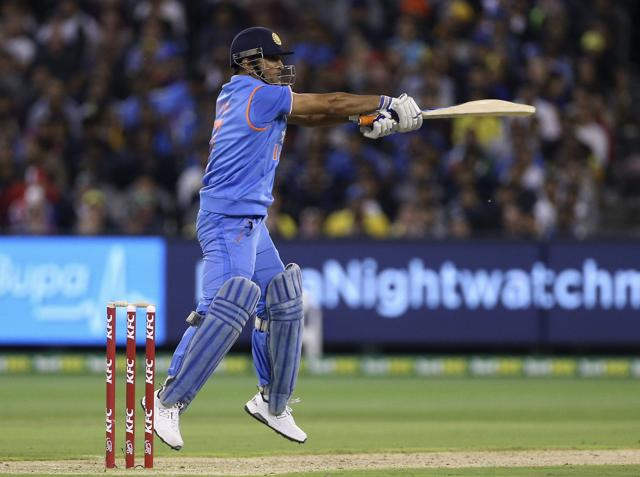Pathankot City


Mahendra Singh Dhoni received a lot of flak for his unsuccessful attempts to finish innings with a flourish during the 1-4 One-day series defeat in Australia last month, as well as in the home series against South Africa.
Renowned for that role, he was questioned repeatedly, and the skipper’s trademark humour wasn’t enough to tackle them at media conferences.
But once the T20s began, there was a spring in his stride, and it appeared Dhoni was regaining his lost touch.
At Adelaide, in the first T20, he surprised everyone with a three-ball 11. That was followed by a nine-ball 14 in Melbourne. He expressed himself without worrying about remaining not out as he had two accomplished finishers, Yuvraj Singh and Suresh Raina, waiting in the dugout. Dhoni’s approach was suddenly reminiscent of his tactics until the 2011 World Cup, suggesting that his decline as a finisher was also due to the drastic changes in the combination since then.
Batting with tail
Unlike the T20 side in Australia, Dhoni didn’t have Yuvraj Singh at No 6 in ODIs and Raina was left out due to a dip in form. In such a situation, once the top four batsmen were out, Dhoni had to stem the rot as well as help the innings regain momentum. And he often found himself as the last recognised batsman. With Ravindra Jadeja or Stuart Binny at the other end, Dhoni would make sure he stayed till the end by cutting out all risky shots.
After the 2011 World Cup win, India lost 19 ODIs under Dhoni, and in most of these games, he batted at No 6 alongside a bowling all-rounder. Although he averaged a shade over 35, his strike rate diminished, and with it the image as a finisher.
Dhoni would look to take the game to the end but by then the asking rate would have climbed beyond reach. The 2015 World Cup semifinal against Australia was a perfect example of how Dhoni lost the plot once he stopped dominating the bowlers.
No flexibility
Besides having to bat with relatively less experienced all-rounders and tail-enders, another reason was his inability to make the batting order flexible. Earlier, Dhoni would gamble by promoting himself up the order and play a cameo to set the tone. But once Virender Sehwag, Sachin Tendulkar and Yuvraj made way for Rohit Sharma, Shikhar Dhawan and Ajinkya Rahane in the top four, Dhoni had to check his attacking instincts.
Having shuffled Rahane up and down the order, Dhoni finally decided the best place for the Mumbai batsman was No.4 as it gave him time to settle down. But that forced Raina to bat at 5 and Dhoni would sit padded up till the end. The Kanpur ODI against South Africa in October showed how the game slipped from India’s grip once Raina fell and expectations rose on Dhoni’s finishing.
In Australia, Dhoni said he wanted to see the all-rounders fire in unison and that he would be happy to go with the same combination in the World Twenty20. The team picked has been pretty much the same, barring the inclusion of uncapped Delhi all-rounder Pawan Negi and pacer Mohammed Shami, back from injury.
Dhoni said the current set-up gave him scope to be flexible. Although it makes Rahane’s chances of making it to the eleven difficult, it gives Dhoni the licence to promote himself when he feels like.
With India playing against Sri Lanka and in the Asia Cup before the WT20, it gives Dhoni the chance to regain his touch. With Raina and Yuvraj looking to have regained form, they can be trusted to bat down the order too. And that could be a new dawn for Dhoni.
Copyright © 2024 About Pathankot | Website by RankSmartz ( )
)